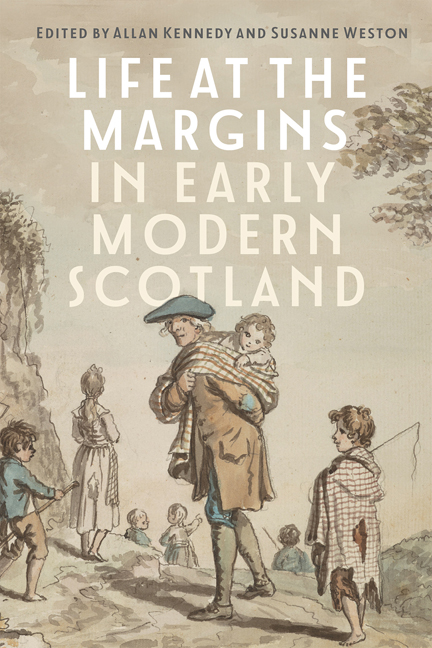9 - Navigating Marginality: The Coal Mine Workers of Seventeenth-Century Scotland
Published online by Cambridge University Press: 08 May 2024
Summary
‘The colliers, in all countries, are generally an unruly set of labourers; and those of this work were like their neighbours.’ So declared the minister of Alloa in his 1793 entry into the Statistical Account of Scotland when describing the coal mine which had been in operation there since around 1623. The minister recorded that he had recently observed a reformation among the colliers, who had hitherto only been ‘remarkable for their ignorance and dissoluteness of manners’. The catalyst for this reformation in the colliers’ moral character was the so-called (partial) ‘emancipation’ of forced or bound labour in 1775, albeit this was not fully abolished until 1799. This concept of miners’ wildness has often been accepted in the topic's limited historiography, which tends to focus mainly on the eighteenth century. It can be boiled down to two main schools of thought. The more traditional school has tended to focus on parliamentary statutes on collier serfdom in addition to court cases concerning these. Such scholarship largely takes a high industry approach, rather than focusing on mine workers. Contrarily, the more recent, revisionist school, inspired by both social history and history from below, has focused on manuscript sources. In doing so it has uncovered colliers’ independent action and active engagement with the legal system. However, this has been rooted mostly in limited use of account books (largely confined to the Clerks of Penicuik's voluminous records) and reactionary modes of collier agency, tending to exalt the proto-capitalist diversification of the mine own- ers rather than focusing on the influence of the workers in that respect. Also, both schools have concentrated chiefly on male colliers, without sufficient weight being given to those workers, especially coal bearers, who were often women or children.
Scottish coal mine workers of the early modern period can be difficult to trace through primary sources. Civil and church court records are excellent sources for following these people, but by their very nature they rely on actionable offences being carried out or at least suspected. Utilising just this source-base may lead to skewed conclusions which buy into the depictions of coal mine workers as they appear in statute. Coal mine account books, which became increasingly regularised and widespread in the later seventeenth century, offer different perspectives. They are invaluable sources, but are too often tantalisingly laconic, simply recording payments in and out of the mine.
- Type
- Chapter
- Information
- Life at the Margins in Early Modern Scotland , pp. 145 - 160Publisher: Boydell & BrewerPrint publication year: 2024

